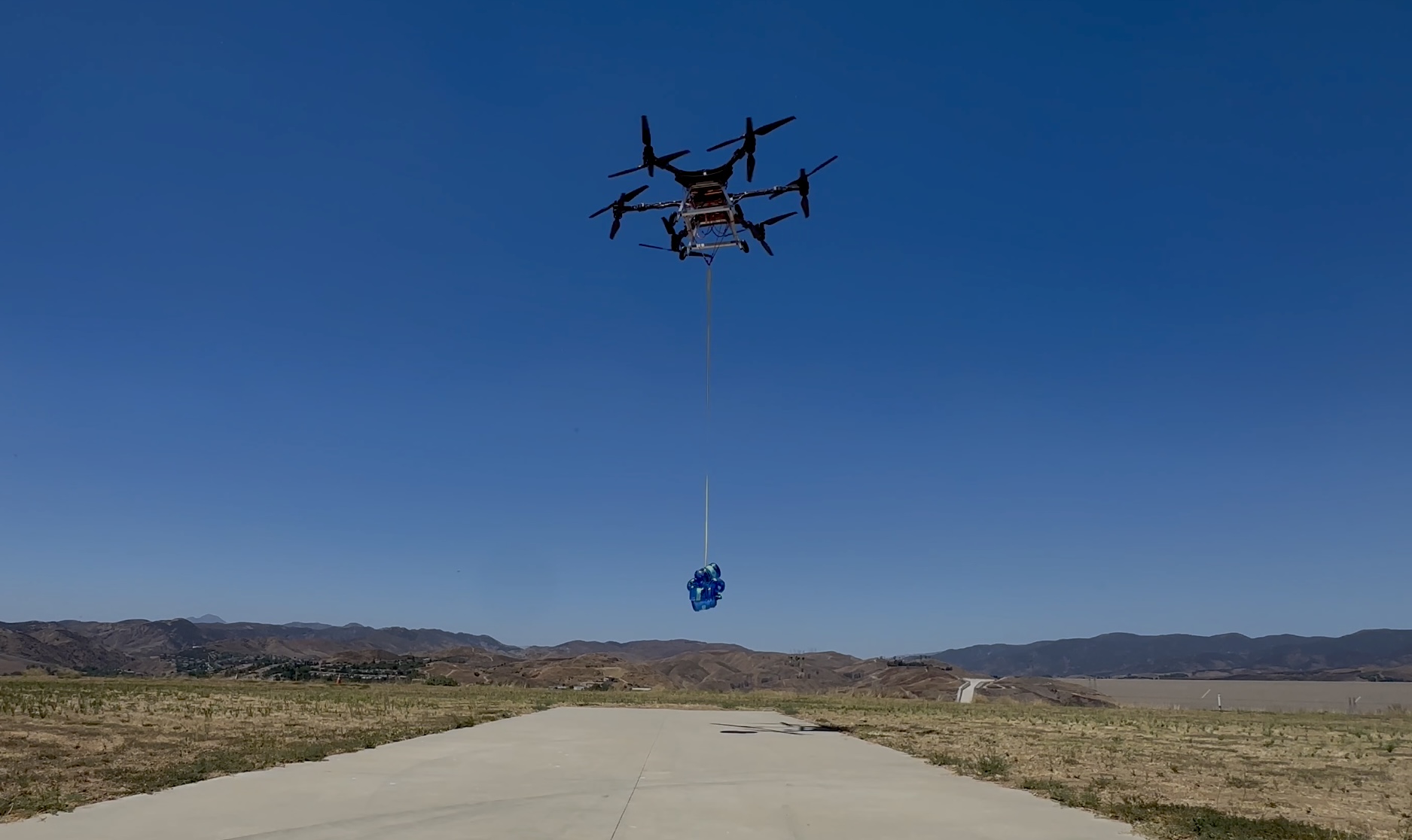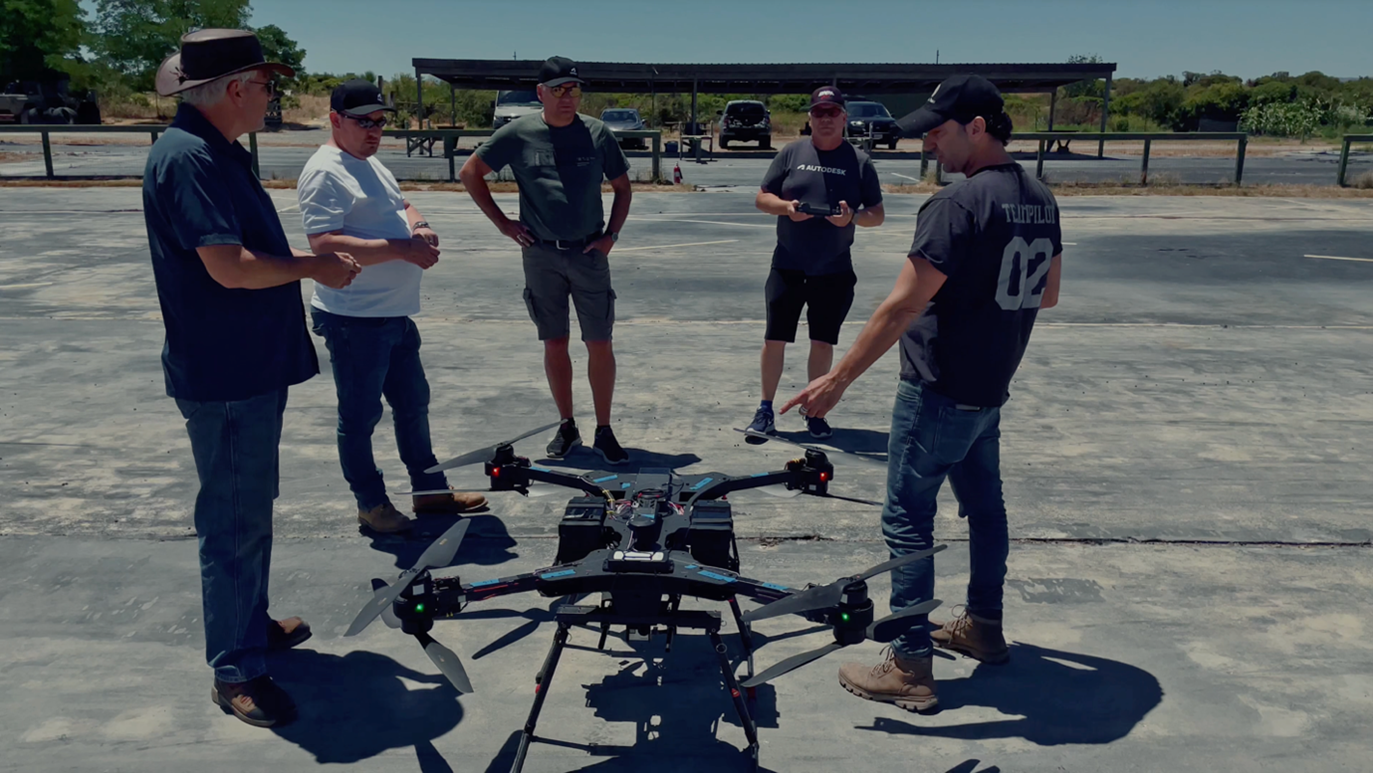Kaizen Aerospace Collaboration Yields Modular Testbeds for Performance-Aided Design
Autodesk Research and KaizenTM Aerospace are on an ambitious journey to design and manufacture modular testbed platforms for performance aided design research.
Performance-aided design is a new approach to the product design process that integrates sensor-collected product performance data into the design. This process incorporates performance data into cloud-based digital twin workflows and automates the product design iteration process. A sensorized flying vehicle, also known as an unmanned aerial vehicle (UAV), was chosen as the test platform; its primary purpose is to serve as a modular test bed for novel performance-aided design research. Equipped with sensors, the flying vehicle rapidly collects performance data from flight tests, using this real-world data to inform subsequent design iterations. The modularity of its components allows for quick changes to the vehicle’s configuration, enabling comparative evaluation of alternative designs.
Why a flying vehicle testbed platform?
To bring the concept of performance-aided design to life, Autodesk and Kaizen Aerospace developed a research testbed platform. This platform is essential for testing and validating performance-aided design methodologies in real-world conditions. Flying vehicles equipped with advanced sensors capture a wealth of performance data, which is then fed into cloud-based digital twins. These digital twins continuously evolve, providing insights that inform subsequent design iterations.
This ability to capture robust data sets, combined with the complex and demanding use case of flying vehicle design, demonstrates the capabilities of Autodesk’s design and make software. It encompasses a multitude of engineering challenges, including multidisciplinary optimization, structural integrity, weight considerations, and compliance with stringent regulatory standards. Our research intent is to support innovative design techniques, rapid prototyping, efficient collaboration, and data management, which is essential for managing the intricate assemblies of complex products. By tackling the complexities of flying vehicle design, we can effectively demonstrate how performance-aided design research excels in solving some of the most challenging engineering problems and set a new standard in the industry.
Why Kaizen Aerospace?
Autodesk Research partnered with Kaizen Aerospace for several reasons, including their diverse portfolio of unmanned aerial vehicles (UAVs) such as the versatile xFoldTM UAVs These UAVs offer an expansive testbed platform to deploy various sensor technologies and support a wide range of applications, providing a robust foundation for performance-aided design research. By leveraging Kaizen Aerospace’s UAV technology, Autodesk can gather comprehensive performance data from complex products across different operational environments, plus explore numerous design scenarios.
“Our collaboration with Autodesk Research is key to pushing the boundaries of performance-aided design,” said Ziv Marom, CEO, Kaizen Aerospace. “By using our xFold UAV platforms, like the xFold DragonH1000, which can safely lift 1000 pounds of cargo as well as lifting humans safely in search and rescue missions, and soon the xFold DragonH2000, designed to handle 2000lbs, we’re working to transform design innovation. This performance data allows us to evolve our UAVs at unprecedented speeds, showcasing the real-world potential of integrating sensor data into design iterations.”
With the emerging market of air mobility and vertical takeoff and landing vehicles, design tools require significant enhancements to support these new concepts. Traditional design techniques struggle with the challenges posed by distributed electric propulsion with high-energy flow from the array of motors, which leads to complex propulsion and airframe interactions. Given the limited knowledge in this field and the need to operate across various flight modes, validated design tools are essential. To address these challenges and showcase the abilities of performance-aided design research, Autodesk Research used the UAV platform technologies provided by Kaizen Aerospace to design, build, and test a multi-rotor research flying vehicle.
The future of performance-aided design
The collaboration with Kaizen Aerospace proved to be a significant asset for generating sensor data as part of the performance-aided design research effort. As a result, Autodesk Research is advancing innovative performance-aided design research by incorporating performance data into cloud-based digital twin workflows and automating the product design iteration process.
Get in touch
Have we piqued your interest? Get in touch if you’d like to learn more about Autodesk Research, our projects, people, and potential collaboration opportunities
Contact us
